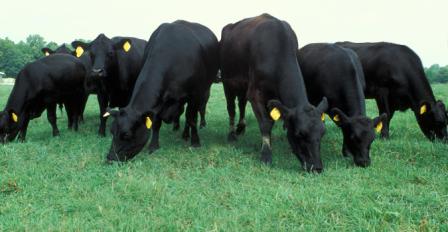What Is the Water Content
of Things?
by Nancy Hearn, CNC
Note: As an Amazon Associate I earn from qualifying purchases.
The water content of things, including the food we eat and the products we buy, might surprise you.
Since about 30 percent of the world’s population lives in regions that struggle with water shortage, being aware of our individual and collective water usage can effect change.
We need water to grow everything we eat and to produce almost all the products we use every day. The water used comes from rain or snow melt and is added to the food growing or production process of things.
This hidden water is called “virtual water” and, according to Stephen Leahy in Your Water Footprint: The Shocking Facts About How Much Water We Use to Make Everyday Products,” each of us uses far more virtual water than the ‘regular’ water we can see, feel and taste.”
According to Leahy, the daily water usage for the average American is about 2115 gallons of water a day, which includes the direct amount of water use (drinking, cooking, bathing) as well as the virtual (i.e., hidden) water use.
Estimated Measurements
Unfortunately, it is difficult, for many reasons, to determine highly accurate numbers for the water content of things.
For example, there are a wide variety of techniques for manufacturing and food growing processes that are used worldwide.
Thus, the amount of water used can vary greatly depending on how and where the food is grown or the product is produced.
In addition, the water-usage numbers can vary significantly depending on how far you go back in the food-growing chain or production process.
For example, when it comes to beef, some measurements will only take into consideration the amount of water the cows drink. But the amount of water required to grow the food that the cows graze on is huge and accounts for over 90 percent of the large footprint for beef production.
Thus, the following are estimates of water content for some common foods and products.
We are using liters (1 liter = 1.06 quart) as the common measurement for easy comparison.
Water Content of 10 Common Things
- Beef. One pound of beef uses anywhere from 7,500 to 35,000 liters of water, which includes water for all feed.
- Chicken. One pound of chicken uses 1,750 to 2,800 liters, including all feed water.
- Cotton jeans. It takes about 8,000 liters of water to grow the cotton for and manufacture a pair of jeans. Two pounds of finished cotton textile uses 11,000 liters.
- Leather shoes. The cost of water for a pair of leather shoes is 16,600 liters.
- Microchip. The water footprint for making a pound of microchips is about 8,000 liters.
- Rice. The water cost of growing a pound of rice is about 950 to 2,500 liters.
- Eggs. The water use for producing a 12-carton of eggs requires about 3,500 liters, which includes water for all feed.
- Wet dog or cat food. Producing one pound of wet food for your dog or cat uses over 14,400 liters of water.
- Paper. To make a pound of paper it takes about 1,500 liters of water.
- Car tires. Rubber production for a set of car tires requires about 8,200 liters of water.
Final Thoughts
Each of us can make a difference in reducing the world water shortage by being aware the water content of things and making small changes.
For example, from a freshwater resource perspective, it is more efficient to obtain calories, protein and fat through crop products than animal products.
This doesn’t mean that everyone must become vegans, but if many people reduced their consumption of beef, for example, the impact would be significant.
In addition, most of the sustainable movements focus on the three R’s—Reduce, Reuse and Recyle. These terms are equally important in terms of the water footprint of foods and products.
In general, it means to minimize waste (and perhaps buy less stuff!), reuse available resources (consider shopping at second-hand stores more often), and recycle the waste.
References
Peter Gleick; The Pacific Institute; The World’s Water 2008-2009: Water Content of Things.
Waterfootprint.org: Product Water Footprint
Waterfootprint.org: Water Footprint of Crop and Animal Products: A Comparison
Return from What is the Water Content of Things to World Water Scarcity
If you would like to reproduce or republish this article or any other article on this site, feel free to do so but please include a reference or link to the article at WaterBenefitsHealth.com.
Sign Up for Our Monthly
Newsletter
Visitor Comments
"This was the best and most straight forward info on the net yet. I asked a question and got an answer that made sense. Thank you so much!" - Linderlinder
FINALLY!!! I have been wondering about this for years with no 'solid' answer. This is exactly what I've been wanting to know! Thank you for this share..." by Andy
"Thank you for the information, Nancy. I appreciate it. Your article and findings are very helpful, referring to dehydration." - Carolyn
"Lemon water is one drink both my wife and I can't drink. It upsets our stomachs. We are in our sixties and in very good health—well, better health now that we drink about 2 liters plus of water each day. It has made so much difference to our digestive systems and recovery every day. Thank you for your website and effort." - Rod



